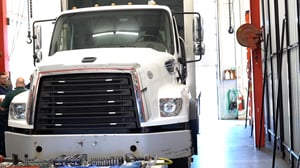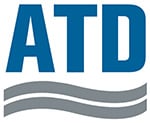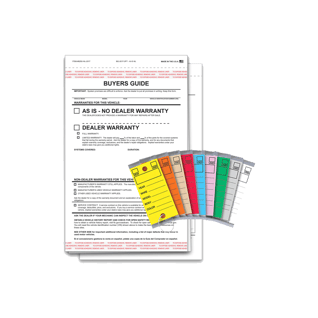
The New Tax Credits that Affect Commercial Trucks from the IRA Act '22
The NADA/ATD Regulatory Affairs team has compiled important information on the new tax credits impacting commercial trucks stemming from the “Inflation Reduction Act of 2022.” These credits are available effective January 1, 2023. Please review the following information.
PARTNER SPOTLIGHT
Dealer Management System, Computer Technology, Media/Advertising, Automotive Auction, F & I/Aftermarket Products, Automotive Technology Training & Compliance
 A NHADA Gold PARTNER
A NHADA Gold PARTNERComputer Technology, Automotive Shop Equipment, Environmental Services
 A NHADA Platinum PARTNER
A NHADA Platinum PARTNERF & I/Aftermarket Products, Automotive Technology Training & Compliance, Environmental Services
.png?width=150&name=corp_logo_horz_on_light_with_trademark_symbol_1200w%20(002).png) A NHADA Diamond PARTNER
A NHADA Diamond PARTNERF & I/Aftermarket Products, Financial Services, Automotive Technology Training & Compliance
 A NHADA Diamond PARTNER
A NHADA Diamond PARTNERThe Section 45W Qualified Commercial Clean Vehicle Credit and Section §30C Alternative Fuel Vehicle Refueling Property Credit: A Primer for Commercial Motor Vehicle (CMV) Dealerships
The Inflation Reduction Act (IRA) was signed into law on 8/16/22. Among other things it modified and created three tax credits for clean vehicles and one for refueling infrastructure. The new IRC §45W Credit for Qualified Commercial Clean Vehicles and the IRC §30C Alternative Fuel Vehicle Refueling Property Credit apply to CMV dealerships. Detailed information on these tax credits is found on a NADA/ATD EV incentives webpage which also links to a recording of the December 27, 2022, NADA/ATD Webinar on these tax credits. CMV dealerships should review IRS information on Section 45W found here and in Topic G of the IRS EV Credit Fact Sheet along with any clean vehicle tax credit information they receive from OEMs and finance/lease sources.
1. Section 45W Qualified Commercial Clean Vehicle (QCCV) Credit
The non-refundable QCCV tax credit potentially applies to battery electric vehicles (BEVs), plug-in hybrids (PHEVs), and fuel cell electric vehicles (FCEVs) made by qualified manufacturers and placed in service after 12/31/22 and before 1/1/33. To be eligible for a credit, purchasers typically must buy a QCCV for “commercial use or lease” (and not for resale). “Commercial or business” use means the QCCV is subject to the allowance for depreciation (i.e., it is used in a trade or business of the taxpayer or for the production of income). This includes the business of leasing by lessors. A direct pay exception exists for states, political subdivisions, and other tax-exempt entities that acquire creditable vehicles for use.
The amount of a QCCV credit is the lesser of (a) 15% of a PHEV’s basis (i.e., its cost to the purchaser)/30% for a BEV or FCEV, or (b) the amount the purchase price exceeds the price of a comparable ICE vehicle. The credit is capped at $7,500 for a QCCV of less than 14,000 lbs GVWR with a battery capacity of at least seven kWh, and $40,000 for a QCCV of 14,000 lbs. GVWR and above with a battery capacity of at least 15 kWh. The battery capacity requirement will easily be met. In addition, an IRS safe harbor renders most QCCVs eligible for a full $7,500 or $40,000 credit. Certain medium-duty QCCVs may not fall squarely within the safe harbor but may nonetheless qualify for a full tax credit.
Taxpayers may claim credits for each eligible QCCV placed into service in a given tax year. Section 45W credits are not transferable and taxpayers may not claim both a Section 30D and 45W credit for a same light-duty QCCV.
2. Section §30C Alternative Fuel Vehicle Refueling Property Credit (AFVRP)
Revised the existing non-refundable tax credit for AFVRP placed into service between 12/21/22 and before 1/1/33. The AFVRP must be placed into service on real estate that falls within either a low-income urban census tract or a non-urban census tract.
For AFVRP of a character subject to depreciation, the tax credit will either be 6% of cost of the AFVRP or 30% of cost of the AFVRP for projects that meet prevailing wage and registered apprenticeship requirements. Tax credits are capped at $100,000/item of AFVRP, but the IRS has yet to define what an “item” is. In addition to the commercial AFVRP, Section 30C provides for a credit of up to 30% of the cost, capped at $1,000/item of non-commercial (e.g., homeowner) AFVRP. Bidirectional AFVRPs are credit eligible.
Questions on these two EV-related credits may be directed to regulatoryaffairs@nada.org.



















.png?width=150&name=Ally_Final%20Logos%20and%20Pairings_11.14.2018-01%20(2).png)


-2.png?width=150&name=Wipfli%20Logo%20Blue%20RGB%20(1)-2.png)


.jpg?width=150&name=NHADA_Partner_FTR_Img_NHADA_Insurance%20(1).jpg)


.jpg?width=150&name=NHADA_Partner_FTR_Img_JMA(1).jpg)




